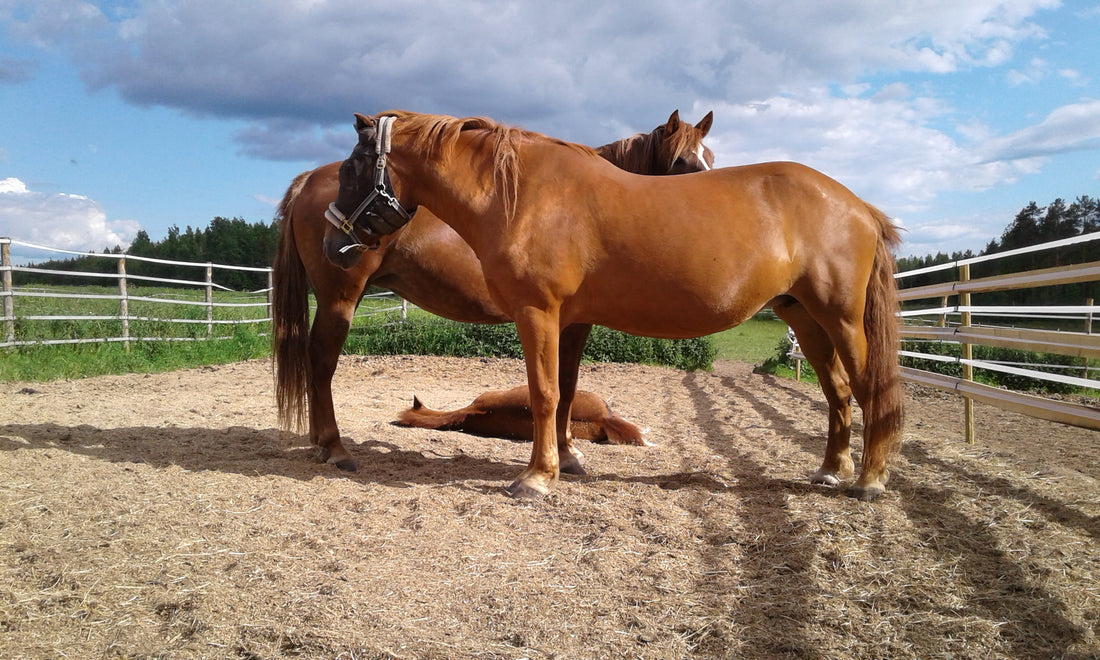
Long lasting pain
Pain is not meant to last long but is a protective mechanism of the body made to accompany injuries and illnesses that heal. Acute pain is useful and adaptive. The horse changes its behavior to avoid further damage and heal the body as efficiently as possible. And when the horse recovers, the pain also eases at the same rate, finally stopping altogether. The changes in the horse's life related to short-term pain aim at how to get rid of the pain.
Unlike short-term pain, long-lasting pain is a daily struggle for the horse. It persists, and the horse cannot get rid of it by changing its behavior. This is the main difference between short-term and long-term pain: long-term pain presents a challenge to the patient that must be dealt with daily because the horse rarely gets days off from pain. Therefore, eventually, the changes in the horse's behavior caused by long-lasting pain begin to focus on how to cope with the pain instead of getting rid of it.
However, the changes in behavior caused by long-lasting pain can start to cause emotional distress for the horse. For example, withdrawal behavior and conflicting situations with the caregiver brought along by persistent toothache can reduce the positive emotions experienced by the patient and increase negative stress and unpleasant emotional states due to difficult social situations. These, in turn, worsen the pain.
Since the pain is not meant to last long, the horse cannot appropriately adapt to the load caused by the constant pain. The burden strains the body, eats up resources, interferes with immunity, and exposes the horse to diseases. The resources required by pain are taken away from everything else the animal must survive. Therefore, long-lasting pain is especially harmful to horses, who already face many challenges.
The burden of pain remains
Long-lasting pain could be thought of as an invisible but very heavy sleigh that the patient drags with him to every place and situation. The stronger the pain and the longer it continued, the heavier the sleigh and the more strength it takes to pull it.
A patient with pain can react strongly to things that did not cause problems before the pain or its intensification. The pain and the lack of sleep caused by it and negative emotional states also interfere with the horse's learning, concentration, and memory, making it difficult for the patient to cope with work. That is when the horse starts to resist working in the indoor arena, even though going off-road is still nice. The handler can mistakenly conclude that the horse is just fooling around in the arena because it is not showing clear signs of pain in the outdoor routes. Although the patient does feel pain even in the terrain, the motivation to go outside, the positive emotions, and the environment outdoors alleviate the pain experience and help to cope with the pain. Thus, the symptoms of pain are much more subtle in the preferable environment.
Since the pain patient always has a heavy load with him, there are fewer resources than before to respond to other challenges. Alternatively, coping with the pain becomes more complicated if the horse must deal with other problems. For example, a new horse in the yard, a changed rider, or a more challenging training program can worsen the pain experienced by the horse without necessarily worsening the pain-causing condition itself, such as osteoarthritis. The increased demands can be seen as increased pain behavior, but also as, for example, apathy, anxiety, aggression, or reluctance.
In addition, the horse may encounter overwhelming situations for the patient in pain. The pain which the horse managed reasonably well before the new highly stressful situation becomes unbearable due to the challenge. An example is a horse that has coped with intestinal inflammation and the pain it causes well, and the owners did not recognize its pain and illness. Instead, a horse was considered cranky and demanding when it was nervous when saddled and did not allow its hind knees to be touched. Until the stable changed, and everything familiar and safe for the horse disappeared at once. The pain became unbearable, and the horse was very difficult to handle. Fortunately, the new owner recognized the horse's pain behavior, combining it with the information about sensitive sides and knees. Finally, the veterinarian diagnosed the intestinal infection, and the horse received help for his pain.
